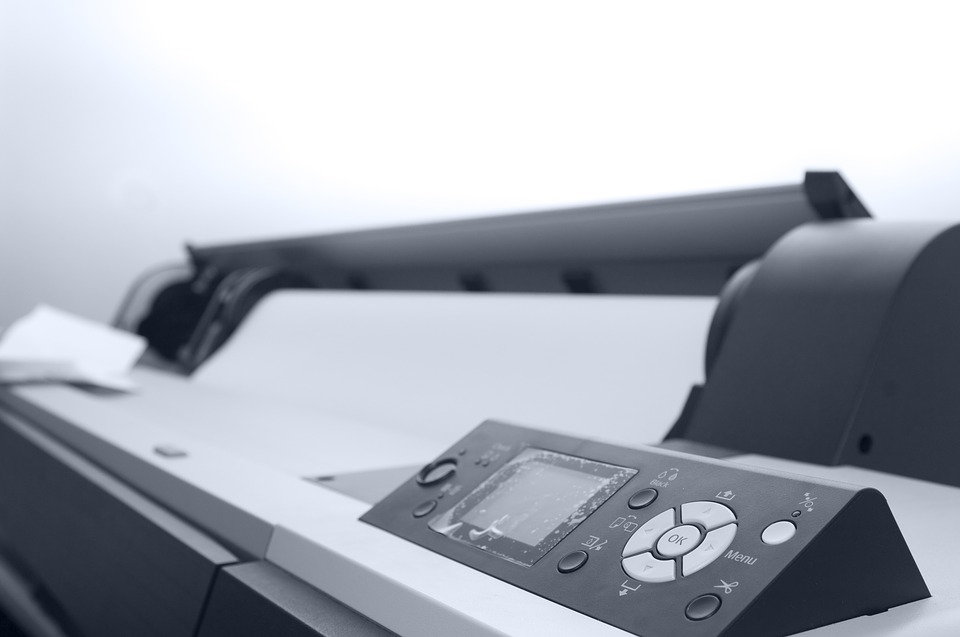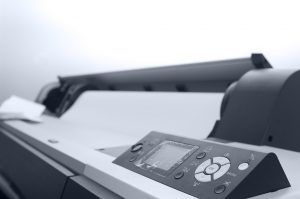
Can You Reverse a Journal Entry in Quickbooks?
 In Quickbooks, you can create and use journal entries to log transactions. Each journal entry contains information about the transaction, including the total dollar amount of the credit or debit. You can easily create them by logging in to your account and accessing Company > Make General Journal Entries, at which point you can follow the steps on screen. But what if you want to reverse a journal entry? Quickbooks allows you to delete journal entries, so you might be wondering if you can reverse them as well.
In Quickbooks, you can create and use journal entries to log transactions. Each journal entry contains information about the transaction, including the total dollar amount of the credit or debit. You can easily create them by logging in to your account and accessing Company > Make General Journal Entries, at which point you can follow the steps on screen. But what if you want to reverse a journal entry? Quickbooks allows you to delete journal entries, so you might be wondering if you can reverse them as well.
The short is answer is yes — you can reverse journal entries in Quickbooks. According to Intuit, you can reverse a journal entry in Quickbooks to track an expensew while the transaction is properly allocated between two accounting periods. Additionally, you can reverse a journal entry to fix mistakes without deleting the journal entry. If the journal entry contains erroneous information, you may want to keep it for accounting purposes. It’s important to reverse it, however, to ensure it doesn’t throw off your books.
So, how do you reverse a journal entry in Quickbooks? Basically, you must log in to your Quickbooks accont, find the journal entry by scrolling through the account history of the respective account tied to the entry, select the journal entry and click to open it, click “Reverse,” and click “Save and close.” Quickbooks will then reverse the entry.
Keep in mind that when you reverse a journal entry, Quickbooks automatically creates a new journal entry. This new entry contains some basic information like an entry number (the original entry number followed by the letter “R”), the date (the first day and month of the original transaction associated with the entry), and Debits or Credits (the debit or credit amount of the original transaction that was reversed). Of course, you’ll also find information like the account name, description and distribution in the new journal entry, all of which comes from the original transaction.
Of course, you can also delete journal entries in Quickbooks. To delete a journal entry, simply click Company > Make General Journal Entries > locate the entry and click to delete. If you have a lot of journal entries in your account, you can search for a specific entry by clicking the “Find” button, followed by entering the journal entry number into the field. Either of these methods will allow you to delete a journal entry in Quickbooks.
Did this tutorial work for you? Let us know in the comments section below!

How to Record an NSF Check From Customers in Quickbooks
 When a customer’s check is returned due to non-sufficient funds (NSF), you must record the failed payment accordingly in Quickbooks. Otherwise, your books will show inflated revenue, which can throw off your entire business’s accounting practices.
When a customer’s check is returned due to non-sufficient funds (NSF), you must record the failed payment accordingly in Quickbooks. Otherwise, your books will show inflated revenue, which can throw off your entire business’s accounting practices.
Assuming you run Quickbooks in single-user mode, you can record an NSF check in just a few simple steps. This is done by logging in to Quickbooks and accessing Customers > Customer Center > Transactions > Received Payments. From here, double-click the failed payment, and on the “Receiving Payments” window, click “Record Bounced Check.”
Quickbooks will now show you a “Manage Bounced Check” window, in which you can enter all of the information pertaining to the customer’s NSF check. This includes the cost of the transaction (e.g. how much the customer was charged), as well as the date, bank fee, expense account and class (if applicable). Keep in mind, however, that you are not required to complete these fields. You can leave them blank and still record the NSF check. With that said, some business owners and accountants add as much information about the NSF check as possible for reference purposes. When you are finished adding this optional information, click “Next” to proceed.
The window should reveal the “Bounced Check Summary,” which includes information about the NSF check. Review this information to ensure it’s correct. Assuming everything looks good, click “Finish,” at which point you will see a “Bounced Check” indicator next to the respective customer, indicating his or her payment did not go through. Congratulations, you’ve just recorded an NSF check in Quickbooks. The software will now create a journal entry that debits your accounts receivables and credits your bank account for the appropriate amount as determined by the NSF transaction. If the customer’s NSF check was $250, for instance, Quickbooks will debit $250 from your accounts receivables while also crediting your bank for $250.
This, of course, is the easiest way to record an NSF check in Quickbooks. If you have Quickbooks set up in multi-user mode, however, you must record NSF checks manually. this is done by creating an account for the transaction, creating an item for the NSF fee, recording the NSF fee from your bank, and then reversing the original payment. Both methods will allow you to properly handle NSF checks so that your books aren’t thrown off. The former, though, is easier and less time consuming than the latter.
Did this tutorial work for you? Let us know in the comments section below!

Should I Pay Myself with a Salary or Owner’s Draw?
 As a business owner, you might be wondering how you’ll receive compensation for your work. Generally speaking, business owners can pay themselves with salary and/or owner’s draw. While both options involve funneling money from the business to the owner’s personal bank account, there are some stark differences between the two.
As a business owner, you might be wondering how you’ll receive compensation for your work. Generally speaking, business owners can pay themselves with salary and/or owner’s draw. While both options involve funneling money from the business to the owner’s personal bank account, there are some stark differences between the two.
Salary vs Owner’s Draw: The Basics
Let’s first go over the basic definition of a salary and owner’s draw. A salary, as you may already know, is a regular, fixed payment that’s made to a business owner or employee. It’s usually paid either monthly or biweekly and expressed as an annual sum. In contrast, owner’s draw are payments made to a business owner that are not regular or fixed. They are taken from the business’s profits and given to the owner as compensation for his or her work.
Sole Proprietorship
The way in which you pay yourself will vary depending on the structure of your business. If you operate your business as a sole proprietorship — meaning you didn’t set up a legal structure — you must pay yourself in owner’s draws. The Internal Revenue Service (IRS) requires all sole proprietorships to use owner’s draws for this purpose. Keep in mind, however, that you are also required to make estimated quarterly payments to the IRS based on the amount of income you expect to earn for the given year.
Limited Liability Corporation
If your business operates a limited liability corporation (LLC), the IRS also requires that you pay yourself using owner’s draws. With an LLC, you’ll have more protection over your personal assets in the event of lawsuits or other liabilities associated with your business. Nonetheless, you must still pay yourself using owner’s draws.
Corporations
Corporations, on the other hand, are often required to pay owners using a salary. C-corps, for instance, are required to compensate owners using a salary, while S-corps are required to compensate owner’s using a salary with an optional owner’s draw. The key difference between S-corps and C-corps is that the former is a pass-through entity in which the business isn’t tax.
Hopefully, this gives you a better understanding of the differences between owner’s draws and salaries. If you’re struggling to determine which payment method is right for you and your business, talk with a professional accountant. They’ll help you understand the intricacies of tax laws while explaining which compensation method is appropriate for your specific business.
Have anything else you’d like to add? Let us know in the comments section below!

What Are Accruals in Business Accounting?
 In business accounting, you may come across the term “accrual.” Basically, this term refers to revenue that has been earned but not yet officially recorded. If you ship a product or service, for instance, you may use accrual accounting to keep track of such revenue. Even if the customer hasn’t paid, you can still record the transaction as an accrual.
In business accounting, you may come across the term “accrual.” Basically, this term refers to revenue that has been earned but not yet officially recorded. If you ship a product or service, for instance, you may use accrual accounting to keep track of such revenue. Even if the customer hasn’t paid, you can still record the transaction as an accrual.
Here’s a common example of accrual accounting: a retail sells a product to a customer, and that customer pays using his or her store credit. The customer might not pay for the product for another month (or longer). Nonetheless, the retail store should record the transaction as an accrual. This ensures the transaction is recorded in the appropriate month. If the customer purchases the product on store credit in January but doesn’t pay until February, recording it immediately as an accrual prevents discrepancies.
Accrual account is the opposite of cash accounting. With cash accounting, the business records its income when payment is received from the customer. This doesn’t necessarily have to be a cash payment. Whether the customer pays using cash, credit card, debit card or check, the business records the income earned from the sale at the time of payment.
You might be surprised to learn that some businesses in the United States are actually required to use the accrual accounting method. The Internal Revenue Service (IRS) specifically states that all businesses that earn more than $5 million in gross sales, for instance, must use the accrual accounting method. Businesses meeting this criteria that use the cash accounting method are not complying with the IRS’s rules in this regard.
Of course, there are both pros and cons to using the accrual accounting method. One advantages include the ability to defer some of your tax liability. Additionally, it ensures your business’s income matches its related expenses. On the other hand, accrual accounting ignores cash flow. You record transactions as income even if you don’t receive payment for those transactions. Furthermore, accrual accounting is more laborious and time consuming than cash accounting.
Hopefully, this gives you a better understanding of accrual accounting. To recap, it involves recording revenue after selling a product or service before the customer has paid. While it has some disadvantages (see above), the Financial Accounting Standards Board (FASB) says it’s an excellent way to reveal additional information about a business’s assets, liabilities and earnings.
Have anything else you’d like to add? Let us know in the comments section below!

How to Print Multiple Invoices at Once
 As your business picks up and the sales begin flooding in, you may find yourself printing dozens or even hundreds of invoices. While you can always print them one by one, doing so is both time consuming and tedious. Thankfully, Quickbooks allows you to print multiple invoices at once. Opting for this method will undoubtedly save you time, allowing you to focus your efforts elsewhere, such as acquiring new customers. So, how exactly do you print multiple invoices at once using the Quickbooks accounting software?
As your business picks up and the sales begin flooding in, you may find yourself printing dozens or even hundreds of invoices. While you can always print them one by one, doing so is both time consuming and tedious. Thankfully, Quickbooks allows you to print multiple invoices at once. Opting for this method will undoubtedly save you time, allowing you to focus your efforts elsewhere, such as acquiring new customers. So, how exactly do you print multiple invoices at once using the Quickbooks accounting software?
First, you’ll need to make sure your invoices have been flagged for this task. This is done by clicking the (+) icon, followed by “Invoice.” From here, complete the invoice just as you normally would. If you’re planning to email it to the customer, include the customer’s email address and either check the box for “Send later” or “Print or Review,” followed by “Print later.” You can then click “Save” to save the invoice. Repeat these steps for every invoice you want to print.
To print multiple invoices at once, go to your Quickbooks dashboard and select Sales > All Sales. From here, click the “Filter” drop-down menu, after which you can enter the invoice type, status, delivery method, dates and customer. Next, click the box next to the transactions that you want to print. Because you’re printing multiple invoices, you’ll need to select every invoice that you want to print. When finished, click the “Batch Actions” drop-down menu and select “Print Transactions.” Quickbooks will now print all of the invoices that you previously selected. Of course, you can also email these invoices by choosing “Send Transactions” instead of “Print Transactions” from the “Batch Actions” drop-down menu.
When finished, you’ll find all transactions in the “All Sales” window. You can add an email column to this window by clicking the gear icon and checking the box next to “Email.” Clicking the gear icon once again will close the window. If you’d like to add an email address to a transaction, simply double-click the transaction, add the customer’s email address and click “Save and close.”
Creating and sending invoices is something that comes with the territory of running a business. The good news is that you don’t have to create every invoice manually. By following the steps listed here, you can create and print multiple invoices at once.
Did this tutorial work for you? Let us know in the comments section below!

How to Record a Vendor Refund in Quickbooks
 It’s not uncommon for business owners to receive refunds from vendors. There are a few different scenarios in which a vendor may issue a refund. If you accidentally paid the same bill twice, or overpaid a single bill, the vendor may issue you a refund. Another instance in which a vendor may issue a refund is if he or she is out of the product you purchased. Regardless, it’s important to record these refunds in your Quickbooks account.
It’s not uncommon for business owners to receive refunds from vendors. There are a few different scenarios in which a vendor may issue a refund. If you accidentally paid the same bill twice, or overpaid a single bill, the vendor may issue you a refund. Another instance in which a vendor may issue a refund is if he or she is out of the product you purchased. Regardless, it’s important to record these refunds in your Quickbooks account.
To record a vendor refund in Quickbooks, log in to your account and access the “Banking” menu and click “Make Deposits.” In the “Payments to Deposit” window, click “OK.” Next, click “Received From” under the “Make Deposits” window and choose the vendor who is issuing the refund. You must now click the “From Account” drop-down menu and select the “Accounts Payable account.” In the “Amount” column, enter the total amount of the refund check, after which you can click “Save & Close.”
After completing the steps listed above, you must then record a Bill Credit for the refund. This is done by accessing the “Vendors” menu, followed by “Enter Bills.” Next, click the “Radio” button and enter the vendor’s name. You must then click the “Expenses Tab” and enter the account from the original bill. In this “Amount” column for this field, enter the amount for the account, after which you can click “Save & Close.”
You aren’t out of the woods just yet. You’ll now need to link the deposit to the newly created Bill Credit. Go back to your main account screen and click the “Vendors” menu, followed by “Pay Bills.” Find the deposit that matches the vendor refund and click it. You should then click “Set Credits” to apply the bill credit you previously created, after which you can click “Done.” Finally, complete the process by clicking “Pay Selected Bills” and “Done.”
Regardless of what your business does or offers, you’ll probably receive a vendor refund at some point in time. Maybe the vendor failed to deliver a purchased product or service, or perhaps you overpaid for a product or service. Either way, it’s important to record vendor refunds so they don’t throw off your books. Assuming you use the Quickbooks accounting software, you can easily record vendor refunds by following the steps listed here.
Did this tutorial work for you? Let us know in the comments section below!

What is a Purchase Order in Quickbooks?
 When using Quickbooks, you may come across the term “purchase order.” So, what is a purchase order exactly, and how do they work?
When using Quickbooks, you may come across the term “purchase order.” So, what is a purchase order exactly, and how do they work?
Overview of Purchase Orders
A purchase order is a document stating the intent to purchase products, goods or services offered by another company. It contains detailed information about the intended purchase, including the quantity, price, date and more. Purchase orders are commonly used when a business purchases products or services from another company. The business creates and sends the vendor a purchase order. If the vendor accepts the purchase order, it creates an agreement between the two parties.
How to Create a Purchase Order
You can create a purchase order in Quickbooks in just a few easy steps. First, you’ll need to enable this feature by logging in to your Quickbooks account and choosing Edit > Preferences. From here, you can enable or disable purchase orders.
After enabling purchase orders in Quickbooks, click Vendors > Create Purchase Orders. You can then choose a template to use for the purchase order (optional). Next, click the “Vendor” drop-down menu and select the vendor from whom you are purchasing products, goods or services. If the vendor is new, you’ll need to create a new vendor. If it’s an existing vendor with whom you’ve done business in the past, you can choose the vendor’s name from the list.
Quickbooks also allows users to track purchase orders by class. If you use class tracking, you can click the “Class” drop-down menu and select the class that you want to track the purchase order. Like using a template, however, class tracking is completely optional and not required when creating or using a purchase order in Quickbooks.
Assuming you’ve followed the steps previously mentioned, you’ll need to complete the information for the line item area. When you are finished, you can then add a memo or vendor message to the purchase order in the respective fields. When finished, click “Save & Close” to complete the process.
It’s important to note that the steps listed above only apply to Quickbooks Desktop. Creating and using purchase orders in Quickbooks Online requires a different approach. You can enable purchase orders in Quickbooks Online, for instance, by logging in to your account and clicking the Gear icon > Company settings > Expenses > Purchase Orders. From here, you can click the “Use Purchase Orders box” to enable this feature.
Did this tutorial work for you? Let us know in the comments section below!

How to Set Up and Track Sales Tax in Quickbooks
 Still struggling to set up and track sales tax using Quickbooks? It’s actually a relatively easy process that should only take a few minutes.
Still struggling to set up and track sales tax using Quickbooks? It’s actually a relatively easy process that should only take a few minutes.
To get started, log in to your Quickbooks acount and select “Taxes” on the left navigation menu in the “Sales Tax Center.” From here, you’ll need to click “Add/edit tax rates and agencies,” which is found in the “Related Tasks” list. As the name suggests, this will allow you to add tax rates to your account. Once the new window appears, click “New” and choose either a single tax rate or combined tax rate. You can then enter a name for the rate, agency to which you pay the tax (state tax agency) and the percentage of the rate. If you’re only paying a single agency, choose single rate. If you’re paying tax to multiple agencies, choose combined tax rate.
When you are finished, click “Save,” after which the new rate should appear in your account’s “Sales Tax Rate and Agencies” list. This tax rate will automatically be added to newly created invoices and sales receipts.
Setting up a combined tax rate is slightly different than setting up a single tax rate. When you choose “Combined tax rate,” you’ll need to enter a name for the rate. Next, you’ll need to enter the different sales tax components that create the rate. This includes the component names, agencies’ names and their respective rates (in percentage). Keep in mind that Quickbooks allows you to add other components as well. When you are finished, click “Save” to complete the process. Like single tax rate, the newly created combined tax rate will appear in your ‘Sales Tax and Agencies” list as well as invoices and sales receipts.
Of course, it’s not uncommon for sales tax rates to change. When your state changes its tax rate, you’ll need to go back into your Quickbooks account to update this information; otherwise, you’ll overpay or underpay the sales tax. To update your sales tax rate, refer to the steps listed above.
You can also edit a tax agency’s name in Quickbooks. This is done by clicking the “Rename” option next to the agency whom you wish to rename. From here, you can delete the agency’s old name and create a name for it. When finished, click “Save” to complete the process.
Did this tutorial work for you? Let us know in the comments section below!

5 Tips to Protect Your Business’s Data From Cyber Threats
 With cyber crime at an all-time high, it’s important for business owners to take a proactive approach towards securing their data. According to Security Magazine, cyber crime costs businesses an average of $11.7 million a year. Regardless of the industry in which your business operates, you should follow the tips listed below to secure and safeguard your data from cyber threats.
With cyber crime at an all-time high, it’s important for business owners to take a proactive approach towards securing their data. According to Security Magazine, cyber crime costs businesses an average of $11.7 million a year. Regardless of the industry in which your business operates, you should follow the tips listed below to secure and safeguard your data from cyber threats.
#1) Strong Passwords
Don’t underestimate the importance of using strong passwords. Your login credentials are your first line of defense against cyber threats. Using a weak password will open the doors to hacking by making it easier for unauthorized individuals to access your data.
#2) Beware of Phishing Attempts
In addition to using strong passwords, you should also familiarize yourself with the signs of phishing attempts. Hackers, for instance, often send emails to business owners and employees that look like legitimate messages. As a result, the recipient clicks a link or downloads an attachment, only for this action to deploy malicious software on the user’s computer. To prevent this from happening, verify the sender’s identify before opening any links or downloading attachments.
#3) Update Operating System
One of the most common security vulnerabilities affecting businesses is the use of outdated operating systems. Whether your computer runs Windows or Apple iOS, you should update it as soon as a new version is released. When developers identify an exploitable vulnerability, they’ll release a new version to fix it. However, you’ll only be protected from such vulnerabilities if you update your operating system in a timely manner.
#4) Create Backups
Hopefully, your business’s data isn’t compromised, but if it is, you should have a backup copy ready to restore it. Creating regular backups of your data is an important step in protecting against cyber threats. Granted, it won’t stop someone from infiltrating your system and accessing your data. It will, however, allow you to get your business back up and running.
#5) Use Secure Accounting Software
Finally, you can protect your business’s data from cyber threats by using secure accounting software. Quickbooks Online, for instance, uses a variety of cybersecurity solutions to protect data from prying eyes. This includes security features like Audit Trail, Always-On and Activity Log, as well as multi-level permissions to store data. Quickbooks Desktop is also a highly secure accounting solution, featuring many of the same safeguards as its cloud-based counterpart. Whether you choose Quickbooks Online or Quickbooks Desktop, however, you can rest assured knowing that your business’s financial data is safe and secure.
Have anything else you’d like to add? Let us know in the comments section below!

How to Create a Bank Transfer Between Two Accounts in Quickbooks
 According to Intuit, one of the most common mistakes Quickbooks users make when attempting to record a funds transfer between two accounts is accidental duplication. Assuming both accounts appear in the Chart of Accounts, the transfer must be recorded as a single transaction. It will still hit both accounts, but doing so allows the transfer to appear as a single transaction instead of a check transaction and separate deposit transaction. So, how exactly do you create a bank transfer between two accounts in Quickbooks using this method?
According to Intuit, one of the most common mistakes Quickbooks users make when attempting to record a funds transfer between two accounts is accidental duplication. Assuming both accounts appear in the Chart of Accounts, the transfer must be recorded as a single transaction. It will still hit both accounts, but doing so allows the transfer to appear as a single transaction instead of a check transaction and separate deposit transaction. So, how exactly do you create a bank transfer between two accounts in Quickbooks using this method?
There are a few different ways to create a bank transfer between two accounts, one of which involves the “Transfer” option. After logging in to your Quickbooks account, click the (+) icon at the top of the screen, followed by “Transfer.” Next, click the drop-down menu for “Transfer Funds From,” at which point you can scroll through the list of banks to choose the account from which the funds are originating. After selecting the source account of the transfer, click the drop-down menu for “Transfer Funds To.” You can then select the bank account to which the funds are being deposited.
Next, you should see a window appear asking for the amount of transfer. Go ahead and enter the amount of money that’s being transferred in the “Transfer Amount” window. Double check this information to ensure it’s correct, after which you can edit the date and add a memo (optional). When you are finished, click “Save” to complete the process and save your changes.
If you imported the transactions from both accounts, you can easily match the transactions. If you didn’t enter a transaction, however, you’ll need to match the transaction from the other account. This is done by selecting Banking > choose the bank account > click the row of transactions > click the radio button to change it from “Add” to “Transfer.” In the drop-down menu, select the other account. Next, click Transfer > select the other bank account > select Recognized tab > Match.
It’s not uncommon for business owners and accountants to transfer funds between two accounts. When doing so, however, the transaction must be properly recorded. Thankfully, Quickbooks makes this process a breeze. You can easily record a bank transfer between two accounts in Quickbooks by following the steps outlined here. Once complete, the transaction will appear as a transfer in Quickbooks.
Did this tutorial work for you? Let us know in the comments section below!
